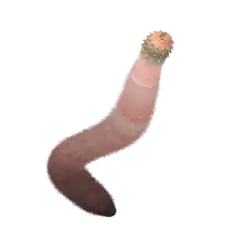Anexo:Biota del esquisto de Burgess
La biota del esquisto de Burgess[n. 1] abarca a aquellos organismos cuyos restos fósiles han sido hallados en aquel yacimiento.[1] La mayor parte de los restos fósiles fueron descubiertos y descritos por el paleontólogo Charles D. Walcott desde 1909. A continuación, una lista sobre las especies descritas en el esquisto de Burgess y en las formaciones geológicas adyacentes.
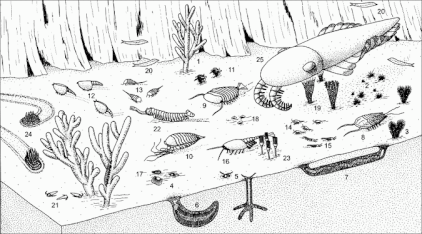
Representación de la biota del esquisto de Burgess:
1.- Vauxia, 2.- Choia, 3.- Pirania, 4.- Nisusia, 5.- Burgessochaeta, 6.- Ottoia, 7.- Louisella, 8.- Olenoides, 9.- Sidneyia, 10.- Leanchoilia, 11.- Marella, 12.- Canadaspis, 13.- Molaria, 14.- Burgessia, 15.- Yohoia, 16.- Waptia, 17.- Aysheaia, 18.- Scenella, 19.- Echmatocrinus, 20.- Pikaia, 21.- Haplophrentis, 22.- Opabina, 23.- Dinomischus, 24.- Wiwaxia, 25.- Laggania.
1.- Vauxia, 2.- Choia, 3.- Pirania, 4.- Nisusia, 5.- Burgessochaeta, 6.- Ottoia, 7.- Louisella, 8.- Olenoides, 9.- Sidneyia, 10.- Leanchoilia, 11.- Marella, 12.- Canadaspis, 13.- Molaria, 14.- Burgessia, 15.- Yohoia, 16.- Waptia, 17.- Aysheaia, 18.- Scenella, 19.- Echmatocrinus, 20.- Pikaia, 21.- Haplophrentis, 22.- Opabina, 23.- Dinomischus, 24.- Wiwaxia, 25.- Laggania.
Filo Annelida
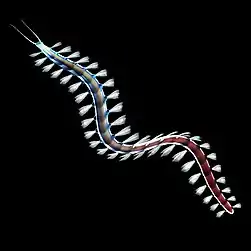
Burgessochaeta setigera
5 especies
- Burgessochaeta setigera (Walcott, 1911)[2] Conway Morris, 1979[3]
Filo Arthropoda
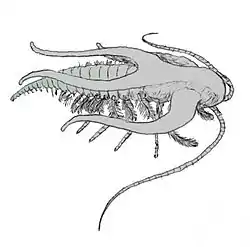
Marella splendens

Yohoia tenuis
31 especies, sin considerar la clase Trilobita.
- Actaeus armatus Simonetta, 1970[4]
- Alalcomenaeus cambricus Simonetta, 1970[4]
- Branchiocaris pretiosa Resser, 1929[5]
- Burgessia bella Walcott, 1912[6]
- Canadaspis perfecta Walcott, 1912[6]
- Carnarvonia venosa Walcott, 1912[6]
- Emeraldella brocki Walcott, 1912[6]
- Habelia brevicauda Simonetta, 1964[7]
- Habelia optata Walcott, 1912[6]
- Helmetia expansa Walcott, 1918[8]
- Leanchoilia superlata Walcott, 1912[6]
- Liangshanella burgessensis Siveter & Williams, 1997[9]
- Marrella splendens Walcott, 1912[6]
- Molaria spinifera Walcott, 1912[6]
- Mollisonia symmetrica Walcott, 1912[6]
- Odaraia alata Walcott, 1912[6]
- Perspicaris dictynna Simonetta & Delle Cave, 1975[10]
- Perspicaris recondita Briggs, 1977[11]
- Plenocaris plena Walcott, 1912[6]
- Sanctacaris uncata Briggs & Collins, 1988[12]
- Sarotrocercus oblita Whittington, 1981[13]
- Sidneyia inexpectans Walcott, 1911[14]
- Skania fragilis Walcott, 1931[15]
- Tegopelte gigas Simonetta & Delle Cave, 1975[10]
- Thelxiope palaeothalassia Simonetta & Delle Cave, 1975[10]
- Tuzoia burgessensis Resser, 1929[5]
- Tuzoia canadensis Resser, 1929[5]
- Tuzoia retifera Walcott, 1912[6]
- Waptia fieldensis Walcott, 1912[6]
- Worthenella cambria Walcott, 1911[2]
- Yohoia tenuis Walcott, 1912[6]
Clase Trilobita
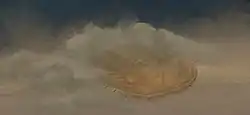
Ogypopsis klotzi
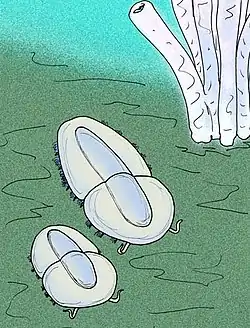
Naraoia compacta
29 especies
- Bathyuriscus rotundatus Rominger, 1887[16]
- Burlingia hectori Walcott, 1908[17]
- Chancia bigranulosa Rasetti, 1951
- Chancia latigena Rasetti, 1951
- Chancia odarayensis Rasetti, 1951
- Chancia palliseri Walcott, 1908[18]
- Chancia stenometopa Rasetti, 1951
- Ehmaniella burgessensis Rasetti, 1951[19]
- Ehmaniella waptaensis Rasetti, 1951[19]
- Elrathia permulta Walcott, 1918[20]
- Elrathina brevifrons Rasetti, 1951[19]
- Elrathina cordillerae Rominger, 1887[16]
- Elrathina marginalis Rasetti, 1951[19]
- Elrathina parallela Rasetti, 1951[19]
- Elrathina spinifera Rasetti, 1951[19]
- Hanburia gloriosa Walcott, 1916[21]
- Kootenia burgessensis Resser, 1942[22]
- Kootenia dawsoni Walcott, 1889[23]
- Naraoia compacta Walcott, 1912[6]
- Naraoia halia Simonetta & Delle Cave, 1975[10]
- Naraoia spinifer Walcott, 1931[15]
- Ogygopsis klotzi Rominger, 1887[16]
- Ogygopsis spinulosa Rasetti, 1951[19]
- Olenoides serratus Rominger, 1887[16]
- Oryctocephalus burgessenis Resser, 1938[24]
- Oryctocephalus reynoldsi Reed, 1899[25]
- Pagetia bootes Walcott, 1916[21]
- Pagetia walcotti Rasetti, 1966[26]
- Ptychagnostus praecurrens Westergard, 1936[27]
Filo Brachiopoda
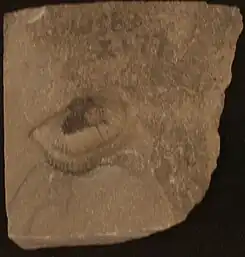
Nisusia burgessensis
8 especies.
- Acanthotretella spinosa Holmer & Caron, 2006[28]
- Acrothyra gregaria Walcott, 1924[29]
- Diraphora bellicostata Walcott, 1924[29]
- Lingulella waptaensis Walcott, 1924[29]
- Micromitra burgessensis Walcott, 1908[18]
- Nisusia alberta Walcott, 1905
- Nisusia burgessensis Walcott, 1889[23]
- Paterina zenobia Walcott, 1912[30]
Filo Chordata
2 especies

Pikaia gracilens
- Metaspriggina walcotti Simonetta & Insom, 1993[31]
- Pikaia gracilens Walcott, 1911[2]
Filo Cnidaria
7 especies
Filo Ctenophora
3 especies
Filo Lobopodia
12 especies

Hallucigenia sparsa
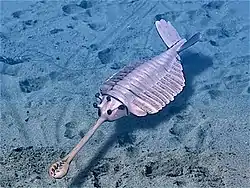
Opabinia regalis
- Amplectobelua stephenensis Daley & Budd, 2010[43]
- Anomalocaris canadensis Whiteaves, 1892[44]
- Aysheaia pedunculata Walcott, 1911[2]
- Caryosyntrips serratus Daley & Budd, 2010[43]
- Hallucigenia sparsa Walcott, 1911[2]
- Hurdia triangulata Walcott, 1912[6]
- Hurdia victoria Walcott, 1912[6]
- Isoxys acutangulus Walcott, 1908[18]
- Isoxys longissimus Simonetta & Delle Cave, 1975[10]
- Opabinia regalis Walcott, 1912[6]
- Peytoia nathorsti Walcott, 1911[33]
- Stanleycaris hirpex Caron et al., 2010[45]
Filo Mollusca
6 especies

Wiwaxia corrugata
- Haplophrentis carinatus Matthew, 1899[32]
- Nectocaris pteryx Conway Morris, 1976[46]
- Odontogriphus omalus Walcott, 1976[47]
- Oikozetetes seilacheri Conway Morris, 1995[48]
- Orthrozanclus reburrus Conway Morris & Caron, 2007[49]
- Wiwaxia corrugata Matthew, 1899[32]
Filo Porifera
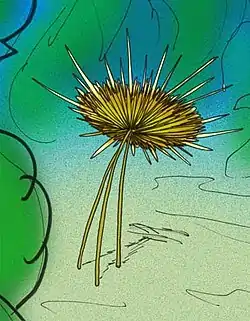
Choia carteri
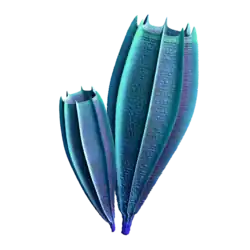
Takakkawia lineata
44 especies
- Capsospongia undulata Walcott, 1920[50]
- Choia carteri Walcott, 1920[50]
- Choia hindei Dawson, 1896[51]
- Choia ridleyi Walcott, 1920[50]
- Crumillospongia biporosa Rigby, 1986[52]
- Crumillospongia frondosa Walcott, 1919[53]
- Diagoniella cyathiformis Dawson, 1889
- Diagoniella hindei Walcott, 1920[50]
- Eiffelia globosa Walcott, 1920[50]
- Eiffelospongia hirsuta Rigby & Collins, 2004[54]
- Falospongia falata Rigby, 1986[52]
- Falospongia ramosa Rigby & Collins, 2004[54]
- Fieldospongia bellilineata (Walcott, 1920) Rigby, 1986[52]
- Halichondrites elissa Walcott, 1920[50]
- Hamptonia bowerbanki Walcott, 1920[50]
- Hamptonia elongata Rigby & Collins, 2004[54]
- Hamptoniella foliata Rigby & Collins, 2004[54]
- Hamptoniella hirsuta Rigby & Collins, 2004[54]
- Hazelia conferta Walcott, 1920[50]
- Hazelia crateria Rigby, 1986[52]
- Hazelia delicatula Walcott, 1920[50]
- Hazelia dignata Walcott, 1920[50]
- Hazelia grandis Walcott, 1920[50]
- Hazelia lobata Rigby & Coliins, 2004[54]
- Hazelia luteria Rigby, 1986[52]
- Hazelia nodulifera Walcott, 1920[50]
- Hazelia obscura Walcott, 1920[50]
- Hazelia palmata Walcott, 1920[50]
- Leptomitus lineatus Walcott, 1920[50]
- Leptomitus undulatus Rigby & Collins, 2004[54]
- Petaloptyon danei Raymond, 1931[55]
- Pirania muricata Walcott, 1920[50]
- Protoprisma annulata Rigby & Collins, 2004[54]
- Protospongia hicksi Hinde, 1888[56]
- Stephenospongia magnipora Rigby, 1986[52]
- Takakkawia lineata Walcott, 1920[50]
- Ulospongiella ancyla Rigby & Collins, 2004[54]
- Vauxia bellula Walcott, 1920[50]
- Vauxia densa Walcott, 1920[50]
- Vauxia gracilenta Walcott, 1920[50]
- Vauxia irregulara Rigby & Collins, 2004[54]
- Vauxia venata Walcott, 1920[50]
- Wapkia elongata Rigby & Collins, 2004[54]
- Wapkia grandis Walcott, 1920[50]
Reino Protista (algas)
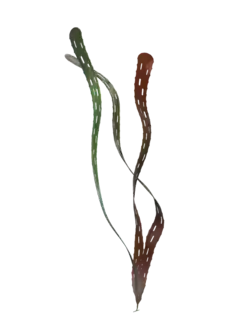
Margaretia dorus
9 especies
- Bosworthia gyges Walcott, 1919[53]
- Bosworthia simulans Walcott, 1919[53]
- Dalyia nitens Walcott, 1919[53]
- Dalyia racemata Walcott, 1919[53]
- Margaretia dorus Walcott, 1931[15]
- Wahpia insolens Walcott, 1919[53]
- Wahpia mimica Walcott, 1919[53]
- Wahpia virgata Walcott, 1919[53]
- Waputikia ramosa Walcott, 1919[53]
Dominio Bacteria
9 especies
- Marpolia aequalis Walcott, 1919[53]
- Marpolia spissa Walcott, 1919[53]
- Morania confluens Walcott, 1919[53]
- Morania costellifera Walcott, 1919[53]
- Morania elongata Walcott, 1919[53]
- Morania fragmenta Walcott, 1919[53]
- Morania globosa Walcott, 1919[53]

Amiskwia sagittiformis
Incertae sedis
9 especies
- Amiskwia sagittiformis Walcott, 1911[2]
- Chancelloria eros Walcott, 1920[50]
- Dictyophycus gracilis Ruedemann, 1931[42]
- Dinomischus isolatus Conway Morris, 1977[58]
- Oesia disjuncta Walcott, 1911[2]
- Pollingeria grandis Walcott, 1918[2]
- Portalia mira Walcott, 1918[8]
- Priscansermarinus barnetti Collins & Rudkin, 1981[59]
- Scenella amii Matthew, 1902[60]
Notas
- En inglés, Burgess Shale.
Referencias
- «Fossil Gallery». The Burgess Shale (en inglés). Royal Ontario Museum. 2011.
- Walcott, C. D. (1911). «Middle Cambrian Annelids». Cambrian Geology and Paleontology II. N°5 57. Washington D.C.: The Smithsonian Institution. pp. 117-120.
- Conway Morris, S. (1979). «Middle Cambrian polychaetes from the Burgess Shale of British Columbia». The Royal Society Publishing 285 (1007). doi:10.1098/rstb.1979.0006.
- Simonetta, A. M. (1970). «Studies on non trilobite arthropods of the Burgess Shale (Middle Cambrian)». Palaeontographia Italica 66: 35-45.
- Resser, C. E. (1929). «New Lower and Middle Cambrian Crustacea». Proceedings of the United States National Museum 76: 1-18.
- Walcott, C. D. (1912). «Middle Cambrian Branchiopoda, Malacostraca, Trilobita and Merostomata». Cambrian Geology and Paleontology II. N°6 57. Smithsonian Miscellaneous Collections. pp. 145-228.
- Simonetta, A. M. (1964). «Osservazioni sugli artropodi non trilobiti della ‘Burgess Shale’ (Cambriano medio)». III Contributo Monitore Zoologico Italiano 72: 215-231.
- Walcott, C. D. (1918). «Geological explorations in the Canadian Rockies. Explorations and fieldwork of the Smithsonian Institution in 1917». Smithsonian Miscellaneous Collections 68: 4-20.
- Siveter, D. J.; Williams, M. (1997). «Cambrian Bradoriid and Phosphatocopid Arthropods of North America». Special Papers in Palaeontology 57: 1-69.
- Simonetta, A. M.; Delle Cave, L. (1975). «The Cambrian non trilobite arthropods from the Burgess Shale of British Columbia. A study of their comparative morphology, taxonomy and evolutionary significance». Palaeontographia Italica 69: 1-37.
- Briggs, D. E. G. (1977). «Bivalved arthropods from the Cambrian Burgess Shale of British Columbia». Palaeontology 20: 596-612.
- Briggs, D. E. G.; Collins, D. (1988). «A Middle Cambrian chelicerate from Mount Stephen, British Columbia». Palaeontology 31: 779-798.
- Whittington, H. B. (1981). «Rare arthropods from the Burgess Shale, Middle Cambrian, British Columbia». Philosophical Transactions of the Royal Society of London. Series B, Biological Sciences 292 (1060): 329-357.
- Walcott (1911). «Middle Cambrian Merostomata». Cambrian Geology and Paleontology II 57. Smithsonian Miscellaneous Collections. pp. 17-40.
- Walcott, C. D. (1931). «Addenda to descriptions of Burgess Shale fossils». Smithsonian Miscellaneous Collections 85: 1-46.
- Rominger, C. (1887). «Description of primordial fossils from Mount Stephens, N. W. Territory of Canada». Proceedings of the Academy of Natural Sciences of Philadelphia 39 (1): 12-19.
- Walcott, C. D. (1908). «Cambrian trilobites». Cambrian Geology and Paleontology I 53. Smithsonian Miscellaneous Collections. pp. 13-52.
- Walcott, C. D. (1908). «Mount Stephen rocks and fossils». Canadian Alpine Journal 1: 232-248.
- Rasetti, F. (1951). «Middle Cambrian stratigraphy and faunas of the Canadian Rocky Mountains». Smithsonian Miscellaneous Collections 116 (5): 277.
- Walcott, C. D. (1918). «Appendages of trilobites». Cambrian Geology and Paleontology IV 67. Smithsonian Miscellaneous Collections. pp. 115-216.
- Walcott, C. D. (1916). Cambrian Geology and Paleontology III 64. Smithsonian Miscellaneous Collections. pp. 157-258.
- Resser, C. E. (1942). «Fifth contribution to nomenclature of Cambrian trilobites». Smithsonian Miscellaneous Collections 101 (15): 1-58.
- Walcott, C. D. (1889). «Description of new genera and species of fossils from the Middle Cambrian». United States National Museum: 441-446.
- Resser, C. E. (1938). «Fourth contribution to nomenclature of Cambrian fossils». Smithsonian Miscellaneous Collections 97: 1-43.
- Reed, F. R. C. (1899). «Woodwardian Museum Notes: a new trilobite from Mount Stephen, Field, B.C.». Geological Magazine, New Series 6: 358-361.
- Rasetti, F. (1966). «Revision of the North American species of the Cambrian trilobite genus Pagetia». Journal of Paleontology 40: 502-511.
- Westergard, A. H. (1936). «Paradoxides oelandicus beds of Oland: with the account of a diamond boring through the Cambrian at Mossberga». Sveriges Geologiska Undersökning 30 (1): 1-66.
- Holmer, L. E.; Caron, J.-B. (2006). «A spinose stem-group brachiopod with pedicle from the Middle Cambrian Burgess Shale». Acta Zoologica (Stockholm) 87: 273-290. doi:10.1111/j.1463-6395.2006.00241.x.
- Walcott, C. D. (1924). «Cambrian and Ozarkian Brachiopoda». Cambrian Geology and Paleontology IV 67. Smithsonian Miscellaneous Publications. pp. 477-554.
- Walcott, C. D. (1912). «Cambrian Brachiopoda». United States Geological Survey, Monograph 51: part I, 812 p; part II, 363 p.
- Simonetta, A. M.; Insom, E. (1993). «New animals from the Burgess Shale (Middle Cambrian) and their possible significance for the understanding of the Bilateria». Bolletino di Zoologia 60 (1): 97-107.
- Matthew, G. F. (1899). «Studies on Cambrian faunas, No. 3. Upper Cambrian fauna of Mount Stephen, British Columbia. The trilobites and worms». Transactions of the Royal Society of Canada. 4 (2): 39-66.
- Walcott, C. D. (1911). «Middle Cambrian holothurians and medusae». Cambrian Geology and Paleontology II. (3) 57. Smithsonian Miscellaneous Collections. pp. 41-68.
- Van Iten, H. et al. (2002). «First report of Sphenothallus Hall, 1847 in the Middle Cambrian». Journal of Paleontology 76: 902-905.
- Conway Morris, S. (1993). «Ediacaran-like fossils in Cambrian Burgess Shale-type faunas of North America». Palaeontology 36 (3): 593-635.
- Conway Morris, S.; Collins, D. (1996). «Middle Cambrian ctenophores from the Stephen Formation, British Columbia, Canada». Philosophical Transactions of the Royal Society of London: Biological Sciences 351: 279-308. doi:10.1098/rstb.1996.0024.
- Simonetta, A. M.; Delle Cave, L. (1978). «Notes on new and strange Burgess Shale fossils (Middle Cambrian of British Columbia)». Atti della Società Toscana di Scienze Naturali 85: 45-49.
- Sprinkle, J. (1973). «Morphology and evolution of blastozoan echinoderms». Museum of Comparative Zoology, Harvard University.
- Sprinkle, J.; Collins, D. (2006). «New eocrinoids from the Burgess Shale, southern British Columbia, Canada, and the Spence Shale, northern Utah, USA». Canadian Journal of Earth Sciences 43: 303-322.
- Bassler, R. S. (1935). «The classification of the Edrioasteroidea». Smithsonian Miscellaneous Collections 93: 1-11.
- Caron, J.-B.; Conway Morris, S.; Shu, D. (2010). «Tentaculate Fossils from the Cambrian of Canada (British Columbia) and China (Yunnan) Interpreted as Primitive Deuterostomes». PLOS ONE 5 (3): e9586. doi:10.1371/journal.pone.0009586.
- Ruedemann, R. (1931). «Some new Middle Cambrian fossils from British Columbia». Proceedings of the United States National Museum 79: 1-25.
- Daley, A. C.; Budd, G. E. (2010). «New anomalocaridid appendage from the Burgess Shale, Canada». Palaeontology 53: 721-738.
- Whiteaves, J. F. (1892). «Description of a new genus and species of phyllocarid Crustacea from the Middle Cambrian of Mount Stephen, B.C». Canadian Record of Science 5: 205-208.
- Caron, J.-B. et al. (2010). «A new Burgess Shale–type assemblage from the “thin” Stephen Formation of the southern Canadian Rockies». Geology 38 (9): 811-814. doi:10.1130/G31080.1.
- Conway Morris, S. (1976). «Nectocaris pteryx, a new organism from the Middle Cambrian Burgess Shale of British Columbia». Neues Jahrbuch für Geologie und Paläontologie 12: 703-713.
- Conway Morris, S. (1976). «A new Cambrian lophophorate from the Burgess Shale of British Columbia». Palaeontology 19: 199-222.
- Conway Morris, S. (1995). «Enigmatic shells, possibly halkieriid, from the Middle Cambrian Burgess Shale, British Columbia». Neues Jahrbuch für Geologie und Palaeontologie. Abhandlungen 195: 319-331.
- Conway Morris, S.; Caron, J.-B. (2007). «Halwaxiids and the early evolution of the lophotrochozoans». Science 315: 1255-1258.
- Walcott, C. D. (1920). «Middle Cambrian Spongiae». Cambrian Geology and Paleontology IV. N°6 67. Smithsonian Miscellaneous Collections. pp. 261-364.
- Dawson, J. W. (1896). «Additional notes on fossil sponges and other organic remains from the Québec Group of Little Métis on the lower St. Lawrence; with notes on some of the specimens by Dr. G.J. Hinde». Transactions of the Royal Society of Canada 2: 91-129.
- Rigby, J. K. (1986). «Sponges of the Burgess Shale (Middle Cambrian), British Columbia». Palaeontographica Canadiana 2: 1-105.
- Walcott, C. D. (1919). «Middle Cambrian Algae». Cambrian Geology and Paleontology IV. N°5 67. Smithsonian Miscellaneous Collections. pp. 217-260.
- Rigby, J. K.; Collins, D. (2004). «Sponges of the Middle Cambrian Burgess Shale and Stephen Formations, British Columbia». Royal Ontario Museum Contributions in Science 1: 155.
- Raymond, P. E. (1931). «Notes on invertebrate fossils, with descriptions of new species». Bulletin of the Museum of Comparative Zoology, Harvard University 55 (6): 165-213.
- Hinde, G. J. (1888). «A monograph of the British fossil sponges». Palæontographical society (Parte 2): 93-188.
- Conway Morris, S. (1977). «Fossil priapulid worms». Special Papers in Palaeontology: 1-95.
- Conway Morris, S. (1977). «A new entoproct-like organism from the Burgess Shale of British Columbia». Palaeontology 20 (4): 833-845.
- Collins, D.; Rudkin, D. M. (1981). «Priscansermarinus barnetti, a probable lepadomorph barnacle from the Middle Cambrian Burgess Shale of British Columbia». Journal of Paleontology 55: 1006-1015.
- Matthew, G. F. (1902). «Notes on Cambrian Faunas: Cambrian Brachiopoda and Mollusca of Mt. Stephen, B.C. with the description of a new species of Metoptoma». Transactions of the Royal Society of Canada 4: 107-112.
Enlaces externos
 Wikimedia Commons alberga una categoría multimedia relacionado con la biota del esquisto de Burgess.
Wikimedia Commons alberga una categoría multimedia relacionado con la biota del esquisto de Burgess.
Este artículo ha sido escrito por Wikipedia. El texto está disponible bajo la licencia Creative Commons - Atribución - CompartirIgual. Pueden aplicarse cláusulas adicionales a los archivos multimedia.

